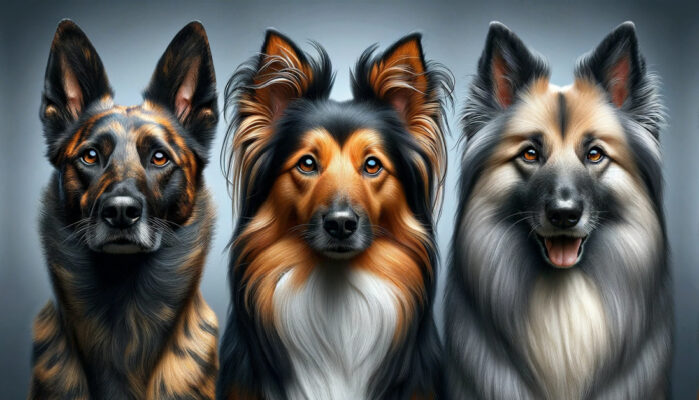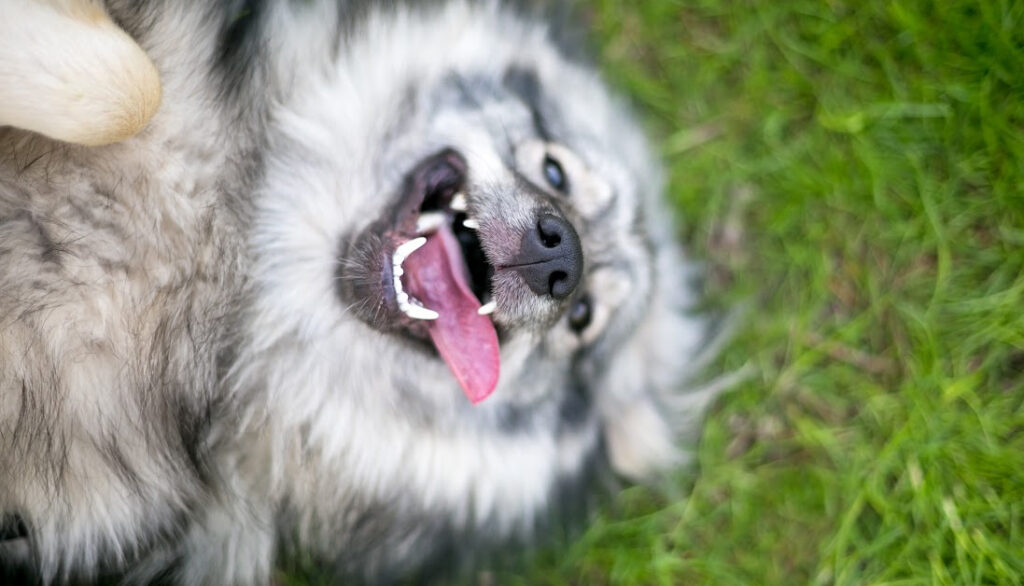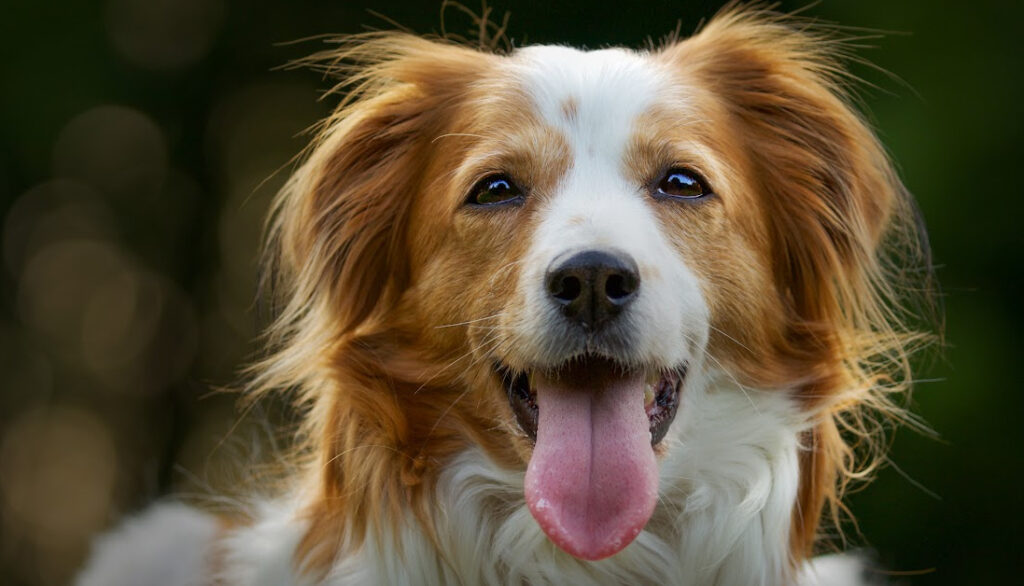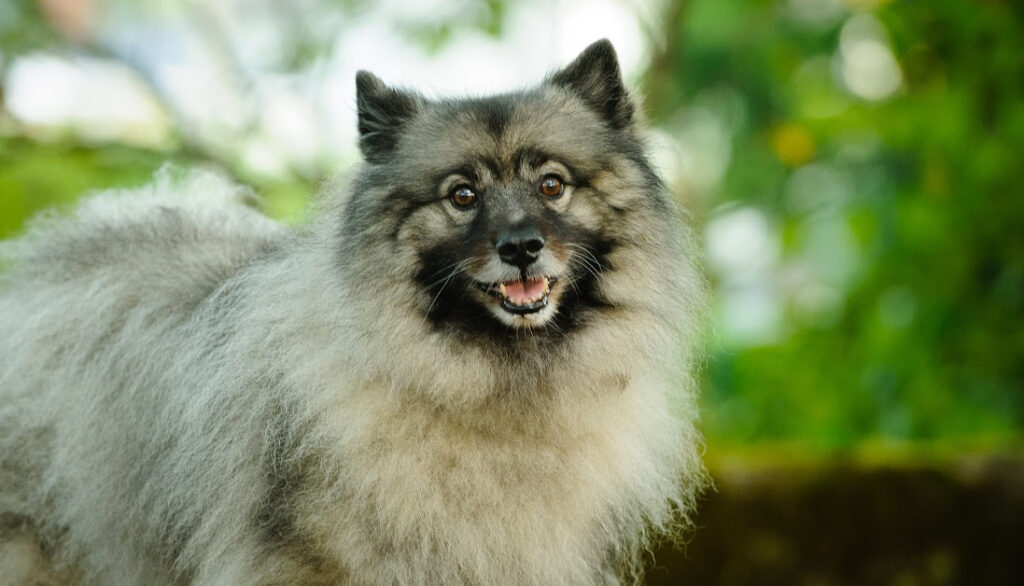If you’re a dog lover, you’re probably familiar with the more popular breeds like Labradors, Beagles, or German Shepherds. But have you ever considered the charm and appeal of Dutch dog breeds? Hailing from the Netherlands, these unique breeds possess a heritage and character that is as rich and fascinating as the country itself. Whether you’re an aspiring dog owner or an enthusiastic canine connoisseur, delving into the world of Dutch breeds can offer a fresh perspective into the diverse realm of man’s best friend.

The story of Dutch dog breeds is deeply intertwined with the history of the Netherlands itself, with each breed reflecting the cultural, geographical, and climatic influences that shaped their evolution. From the sturdy and loyal Dutch Shepherd, historically used for herding and guarding, to the graceful and alert Kooikerhondje, bred for hunting, these breeds are a testament to the diverse needs and lifestyles of the Dutch people over the centuries.
When it comes to characteristics, Dutch breeds are as varied as they come. However, some common traits include their remarkable intelligence, versatility, and an innate desire to work closely with their human companions. Their unique temperaments can range from the energetic and playful nature of the Keeshond to the calm and focused demeanor of the Dutch Shepherd.
Understanding the idiosyncrasies of these popular Dutch dogs can help potential owners select the breed that best fits their lifestyle and expectations. Whether you’re seeking a hardy working dog like the Dutch Shepherd, a charming hunter like the Kooikerhondje, or a fluffy companion like the Keeshond, Dutch breeds offer a delightful array of choices.
The History of Dog Breeding in the Netherlands
Dive into a fascinating journey that weaves together culture, history, and man’s best friend as we explore the robust tapestry of Dutch dog breeding. If you’re curious about the origins of your loyal Dutch Shepherd or your charming Kooikerhondje, or you’re simply a canine enthusiast, this deep dive into the roots of Dutch dog breeds will be a riveting read!
The Evolution of Dutch Dog Breeds
Throughout history, the lowlands of the Netherlands have given birth to an array of impressive dog breeds. The Dutch, known for their practicality, purposefully bred dogs who could serve as more than just companions. Dutch dog breeds were often developed to fill specific roles, from herding livestock, hunting game, to guarding homes and farms.
The Dutch Shepherd, for example, is a breed that traces its roots back to the 1800s. Initially used as a general-purpose farm dog, they were tasked with everything from herding sheep to guarding homes. Over time, as farming became less prevalent, the breed adapted to new roles, serving as police dogs and service animals.
Another iconic breed, the Kooikerhondje, has a rich history dating back to the 16th century. Originally bred for duck hunting, these agile canines were adept at luring ducks into traps with their waving tails. Although they nearly went extinct during World War II, dedicated breed enthusiasts brought them back from the brink.

Key Influences on Dutch Dog Breeding Practices
Just as the Netherlands’ geography and climate have shaped its culture and industries, they have also played a significant role in the development of its dog breeds. The country’s diverse landscapes, from rolling farmlands to bustling urban areas, have necessitated the breeding of dogs with a broad range of skills.
For instance, the strong, sturdy Dutch Smoushond was bred to hunt rats in stables and on ships, reflecting the Netherlands’ maritime heritage. The Wetterhoun, another Dutch breed, was bred for its water-retrieving abilities, showcasing the influence of the country’s numerous waterways.
Social and economic factors have also played a significant role. The shift from agrarian to urban living in the 19th and 20th centuries saw a change in the types of dogs that were bred. The need for versatile working dogs decreased, and the demand for companion animals increased. This shift led to the development of breeds like the Keeshond, a fluffy, friendly dog that makes an excellent family pet.
But perhaps the most significant influence on Dutch dog breeding practices has come from the Dutch people themselves. Known for their pragmatic approach to life, the Dutch have always valued dogs that are not just friendly and loyal, but also intelligent and capable. This is reflected in the enduring popularity of Dutch dog breeds today, both in the Netherlands and around the world.
In short, every Dutch dog breed carries a story, a piece of history shaped by the landscape, culture, and people of the Netherlands. So, the next time you look into the eyes of a Dutch dog, know that you’re looking at centuries of evolution and a rich heritage that is uniquely Dutch.
Characteristics of Dutch Dog Breeds
Dutch dog breeds, known for their unique characteristics, have made their way into the hearts of dog lovers globally. To truly appreciate these breeds, it’s essential to understand their common traits and distinctive temperaments.
Common Traits Among Dutch Canines
Dutch dogs have distinct features that set them apart from other breeds. Here are a few common traits:
- Versatility: Dutch dog breeds are incredibly versatile. Take the Dutch Shepherd, for example, historically used for herding, guarding, and as police dogs. They can adapt to different tasks, making them suitable for various roles.
- Intelligence: Dutch breeds like the Kooikerhondje are known for their keen intelligence. This trait makes them quick learners and easy to train.
- Physical Strength: Dutch dogs are generally robust and sturdy. The Dutch Smoushond, for instance, is a small but muscular breed with a strong build.
- Temperament: Dutch breeds are typically friendly, loyal, and protective. They are known for their strong attachment to their families.
- Appearance: While appearances can vary, Dutch dogs like the Keeshond are recognized for their fluffy coats and fox-like faces.
The Unique Temperaments of Dutch Breeds
Not only are Dutch dog breeds physically distinct, but their temperaments also set them apart.
- The Dutch Shepherd: Known for its loyalty and protective nature, the Dutch Shepherd makes an excellent family pet. It’s energetic, intelligent, and always up for a task, making it a perfect partner for active owners.
- The Kooikerhondje: The Kooikerhondje has a charming and gentle temperament. This breed is usually quite playful, making it a fantastic choice for families with children. However, they are also alert and can be a bit reserved with strangers.
- The Keeshond: The Keeshond is a friendly and outgoing breed. Keeshonds are known for their affectionate nature and love of human companionship, which makes them great companions for those living alone or with family.
In conclusion, Dutch dog breeds are a diverse group with a variety of unique traits and temperaments. Whether you’re looking for a loyal Shepherd, a playful Kooikerhondje, or a friendly Keeshond, there’s a Dutch breed to suit every dog lover’s preferences. It’s such traits that contribute to the popularity of Dutch dog breeds worldwide. Their versatility, intelligence, strength, and wonderful temperaments make them much-loved canine companions. Understanding these traits can help potential owners choose a breed that fits their lifestyle and provide the best care for their new four-legged friend.
List of Popular Dutch Dog Breeds
Known for their distinct traits and diverse abilities, Dutch dog breeds have been a fundamental part of the Netherlands’ cultural heritage. Here, we delve into two of the most popular Dutch dog breeds that have captivated dog lovers worldwide.
The Sturdy and Loyal Dutch Shepherd
One of the most recognized Dutch dog breeds is the Dutch Shepherd. This breed is known for its incredible versatility, intelligence, and loyalty. The Dutch Shepherd, originally used as a herding dog in the Netherlands, is a medium to a large-sized breed with a muscular build and a distinctive brindle coat. They are robust and sturdy, making them excellent working dogs.
- Temperament: Dutch Shepherds are known to be reliable, obedient, and ever-watchful, making them fantastic companions for families and excellent working dogs.
- Skills and Abilities: Apart from herding, Dutch Shepherds excel in various tasks, including police work, search and rescue, and even as service dogs.
- Lifespan: On average, Dutch Shepherds live between 12 to 15 years.
- Size: Male Dutch Shepherds stand approximately 22 to 25 inches tall at the shoulder, while females range from 21 to 24 inches.
The Graceful and Alert Kooikerhondje
The Kooikerhondje is another breed that has put Dutch dog breeds on the map. This breed, named after the Dutch word for “little cager,” was originally used for duck hunting in the Netherlands. Their unique method of luring ducks into traps or “kooien,” made them an invaluable asset for hunters.
- Temperament: Kooikerhondjes are known for their cheerful and intelligent personalities. They are lively and alert, making them great companions and family pets.
- Skills and Abilities: Besides their duck-luring skills, Kooikerhondjes are excellent in agility courses and as therapy dogs due to their empathetic nature.
- Lifespan: Kooikerhondjes typically live between 12 to 15 years.
- Size: Standing at about 14 to 16 inches at the shoulder, Kooikerhondjes are small to medium-sized dogs.
Both the Dutch Shepherd and the Kooikerhondje embody the core traits of Dutch dog breeds — their intelligence, versatility, and steadfast loyalty. Whether you’re seeking a tireless working dog or a charming family pet, these breeds are wonderful representatives of the Netherlands’ canine heritage.

The Dutch Shepherd: A Versatile Working Dog
The Dutch Shepherd, one of the most popular Dutch dog breeds, is a versatile dog breed that has proven its worth in numerous roles over the years. Originating in the rural areas of the Netherlands, this breed was initially used for herding sheep and cattle. Today, their versatility shines through in their roles as police dogs, search and rescue dogs, and even as therapy dogs.
The Role of Dutch Shepherds in Modern Times
Dutch Shepherds are known for their intelligence, loyalty, and strong work ethic, traits that make them highly adaptable to a variety of tasks. They are often seen working alongside police and military personnel, where their keen sense of smell and agility make them excellent detection and patrol dogs.
But it’s not all work for these Dutch dog breeds. Many Dutch Shepherds also excel in dog sports such as agility and obedience trials. Their high energy levels and eagerness to please make them a joy to train and a crowd favorite at competitions.
Despite their working dog heritage, Dutch Shepherds also make wonderful family pets. They are known to be protective and gentle with children, making them a great addition to households with kids. Their friendly nature also means they get along well with other pets.
Training and Caring for a Dutch Shepherd
Training a Dutch Shepherd requires consistency and a positive approach. These dogs are smart and eager to please, which makes them highly trainable. However, they can also be a bit stubborn at times, so patience is a must.
Socialization is another important aspect of raising a Dutch Shepherd. Introducing them to a variety of people, places, and situations at a young age can help them grow into well-rounded adults.
As for their care, Dutch Shepherds are relatively low-maintenance. They have a medium-length coat that requires regular brushing to keep it looking its best. They are also an active breed that needs plenty of exercise to keep them physically and mentally stimulated. This can be anything from a long walk or jog to a game of fetch or a training session.
Feeding your Dutch Shepherd a balanced diet is also crucial. High-quality dog food that is appropriate for their age, size, and activity level will help keep them healthy and fit.
Lastly, regular vet checkups and preventative care are essential for ensuring your Dutch Shepherd lives a long, happy life. Regular vaccinations, flea and tick prevention, and dental care are all part of responsible dog ownership.
In summary, the Dutch Shepherd is a versatile, intelligent, and loyal breed that makes an excellent working dog or family pet. With the right training and care, these Dutch dog breeds can thrive in almost any environment.

The Kooikerhondje: A Charming Hunter
When talking about dutch dog breeds, one can’t miss mentioning the enchanting Kooikerhondje. This Dutch breed is known for its intelligence, agility, and endearing personality. But, there’s more to the Kooikerhondje than just its appealing demeanor. This breed has a rich heritage that dates back centuries in the Netherlands.
The Hunting Legacy of the Kooikerhondje
Kooikerhondjes were initially bred as working dogs, specifically for duck hunting. Their name “Kooikerhondje” translates to “little cager dog” in Dutch. This refers to their traditional role in which they drove ducks into traps or ‘kooi’, hence the name.
These dogs are renowned for their hunting skills, employing a unique technique that involves using their white-tipped tails to lure ducks. They would silently navigate through the waterways and gently sway their white, bushy tails to pique the curiosity of the ducks. The ducks, intrigued by the movement, would follow the dog into a trap. This combination of intelligence and subtlety meant that Kooikerhondjes were highly valued by Dutch hunters.
Despite their hunting background, Kooikerhondjes are known to have a calm and friendly temperament, making them excellent family pets. They are intelligent and quick learners, but they also have a sensitive side and respond best to positive reinforcement training methods.
Living with a Kooikerhondje: What to Expect
If you’re considering adding a Kooikerhondje to your family, there are a few things you should know. First, these dogs are moderately active and require regular exercise to keep them physically and mentally stimulated. A bored Kooikerhondje can become destructive, so they’re not ideal for households where they would be left alone for long periods.
- Exercise Needs: Kooikerhondjes love to play and need a good amount of exercise. They excel in dog sports such as agility, obedience, and flyball. Regular walks and play sessions will keep them happy and healthy.
- Grooming: Their medium-length coat requires regular brushing to keep it looking its best. They’re not heavy shedders, but they do shed seasonally.
- Temperament: They are known to be friendly and good with children. However, they can be reserved with strangers, so early socialization is essential.
- Health: Kooikerhondjes are generally healthy dogs, but they can be prone to certain genetic conditions. Regular vet checks and a balanced diet will help ensure they stay healthy.
The Kooikerhondje, with its blend of charm, intelligence, and athleticism, truly embodies the diversity and richness of Dutch dog breeds. Whether you’re looking for a playful companion, a diligent worker, or a patient and loving family member, the Kooikerhondje might be the perfect fit.
When you think of Dutch dog breeds, the Keeshond undoubtedly comes to mind. This fluffy companion is a symbol of warmth and joy that has been deeply embedded in Dutch history.

The Keeshond’s Role in Dutch History
Keeshonds, affectionately referred to as the “people’s dog,” played a significant role in Dutch history. They were originally bred as watchdogs and companions for the bargemen of Holland, keeping a keen eye out for intruders while keeping their human companions company during long voyages. Their name originates from the Dutch patriot, Cornelis “Kees” de Gyselaer, who adopted the breed as a symbol of the Dutch Patriots Party during the political rebellion against the House of Orange in the 18th century.
The Keeshond’s thick, fluffy coat and cheerful disposition also made them popular as family pets. They were known to be excellent with children, making them an integral part of many Dutch households. Despite their historical significance, the breed suffered a decline in popularity following the Patriots’ defeat. However, thanks to the efforts of dedicated breeders, the Keeshond has made a remarkable recovery and continues to be a beloved breed in the Netherlands and beyond.
Grooming and Exercise Needs of the Keeshond
Keeshonds are covered in a dense, fluffy double coat that requires regular grooming to keep it healthy and shiny. Despite their luxurious coat, they are surprisingly low-shedding but will have two major “blow-outs” a year where they shed their undercoat. Regular brushing, at least twice a week, is essential to prevent mats and keep their coat looking its best.
- Grooming Tools: To properly care for your Keeshond’s coat, you’ll need a slicker brush, a comb with both wide and narrow teeth, and possibly thinning shears for the thick fur around the ears and tail.
- Bathing: Keeshonds don’t require frequent baths – only when they’re particularly dirty or smelly. Too much bathing can strip their fur of natural oils and cause dry skin.
When it comes to exercise, Keeshonds are active and intelligent dogs that require regular mental and physical stimulation. They enjoy walks, playtime, and especially love games that engage their minds like puzzle toys or agility training. Despite their size, they’re quite agile and make excellent competitors in dog sports.
A Keeshond’s energy level and exercise needs can vary, but generally, a couple of walks and some playtime each day should be sufficient. However, they’re also happy to join you for more strenuous activities like hiking or jogging. It’s important to remember that, like all dogs, Keeshonds need to be gradually introduced to new exercise routines and should be closely monitored during hot weather due to their thick coats.
In essence, if you’re looking for a fluffy, cheerful companion with a rich history and an engaging personality, the Keeshond could be the perfect Dutch dog breed for you. With proper care and plenty of love, these dogs are known to reciprocate the affection they receive and become lifelong loyal companions.
Preserving Dutch Dog Breeds
The rich and unique heritage of Dutch dog breeds necessitates efforts to preserve these distinct canine companions. From the charismatic Kooikerhondje to the hardworking Dutch Shepherd, each of these breeds has its own set of qualities that make them stand out in the dog-loving community. However, some Dutch breeds are rare and face the risk of fading into obscurity without dedicated conservation efforts.
Conservation Efforts for Rare Dutch Breeds
Many organizations both within the Netherlands and abroad are making commendable efforts to protect and promote Dutch dog breeds. For instance, the Dutch Kennel Club has implemented programs aimed at maintaining the genetic diversity and health of native breeds. These include strict breeding regulations, health screenings, and educational programs for breeders and potential dog owners.
Internationally, organizations like the American Kennel Club (AKC) and the United Kennel Club (UKC) have recognized many Dutch breeds, aiding in their popularity and preservation. This recognition enables breed-specific clubs to host events and competitions, which serve to increase awareness and appreciation for these dogs.
Furthermore, individuals and breed-specific clubs have also stepped up to promote and protect these breeds. They do this by:
- Organizing breed-specific events and dog shows
- Running awareness campaigns about the breed
- Encouraging responsible breeding practices
- Establishing rescue networks for displaced dogs
The Future of Dutch Dog Breeds in the Dog Community
While the future of Dutch dog breeds seems promising with these ongoing conservation efforts, there’s more that can be done. Education plays a vital role in preserving these breeds. By learning about their heritage, traits, and care requirements, potential dog owners are better equipped to provide the right home environment for these breeds.
The growing interest in unique, non-mainstream breeds also bodes well for Dutch dogs. The internet age has widened the horizons of dog lovers, enabling them to explore and appreciate breeds beyond their geographic restrictions. This, combined with concerted preservation efforts, can help ensure that Dutch dog breeds continue to thrive.
Moreover, every dog owner and enthusiast can contribute to the preservation of Dutch breeds. Whether by choosing to adopt a Dutch breed, participating in breed clubs, or simply spreading the word about these wonderful dogs, each one of us can play a part in keeping the Dutch canine heritage alive.
There’s something truly special about Dutch dog breeds. Their rich history, versatile skills, and charming personalities make them a joy to be around. Let’s do our part in ensuring future generations also get to experience the delight of these Dutch canine companions.
Frequently Asked Questions
Q1: What are some popular Dutch dog breeds?
A1: Some popular Dutch dog breeds include the Dutch Shepherd, Kooikerhondje, Keeshond, and the Stabyhoun.
Q2: What is the temperament of Dutch Shepherds?
A2: Dutch Shepherds are known for their intelligence, loyalty, and versatility. They are excellent working dogs and are also great family pets.
Q3: Are Dutch dog breeds good for families with children?
A3: Yes, most Dutch dog breeds are known for their friendly and gentle nature, making them great companions for families with children. However, it’s always important to supervise interactions between dogs and young children.
Q4: How much exercise do Dutch dog breeds typically require?
A4: Dutch dog breeds are generally active and require regular exercise to keep them healthy and happy. The exact amount can vary depending on the specific breed and individual dog’s health and age.
Q5: Are Dutch dog breeds easy to train?
A5: Dutch dog breeds are known for their intelligence, which often makes them relatively easy to train. However, they can also be independent and may require a consistent, positive reinforcement training approach.
Dr. Candy, a holistic veterinarian and certified raw dog food nutrition specialist, graduated from Oklahoma State University in 2009 with a DVM and has since specialized in companion animal nutrition, advocating for species-specific diets. With a background in wildlife rehabilitation and oil spill response, she combines holistic health and conventional medicine in her unique approach to treating chronic diseases, allergies, and autoimmune conditions in pets. As the owner of a veterinary practice in Colorado and an author, Dr. Candy is dedicated to educating pet parents and improving the health and happiness of animals.




